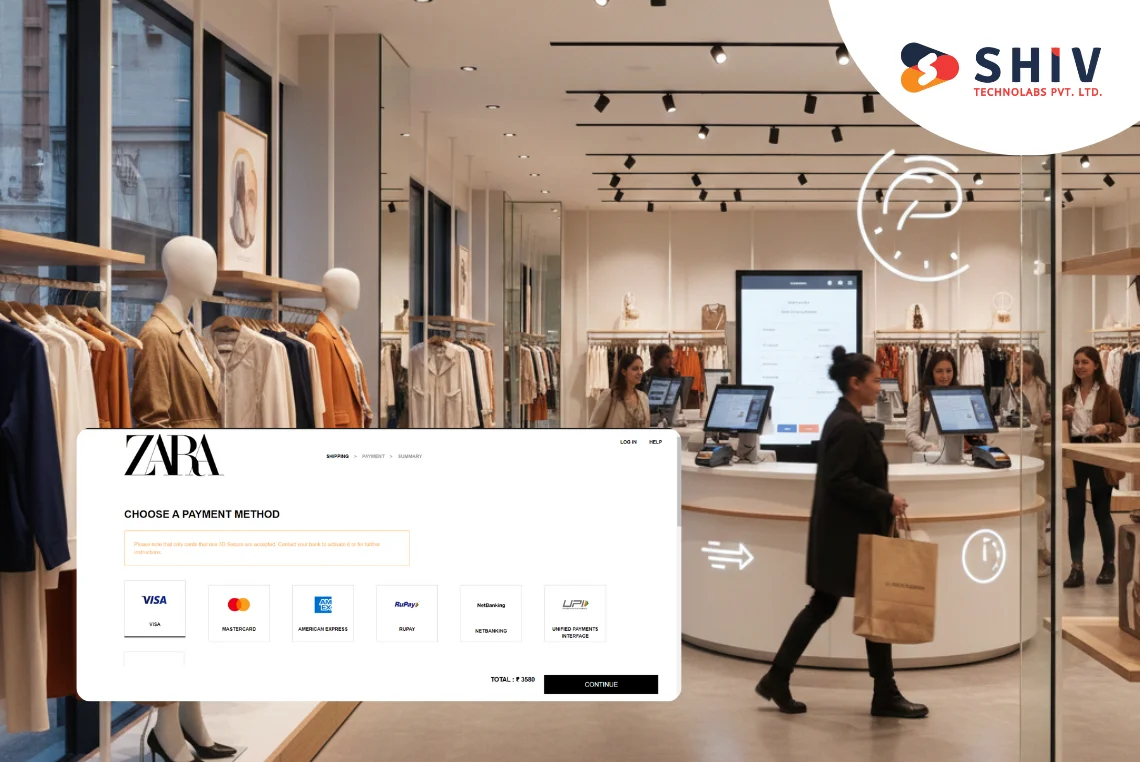Table of Contents
In online retail, holding on to one fixed price can quickly put you at a disadvantage. Trends shift fast, customer preferences change daily, and competitors don’t wait to adjust their rates. This is where digital commerce solutions play a major role in helping sellers stay relevant.
Retailers don’t guess prices anymore. They look at live data, like how many items are left, what people are buying, and what other stores are charging. Changing prices based on this helps them sell faster. If not, the product might just stay there without selling.
This blog breaks down how dynamic pricing in eCommerce supports modern retail and why it matters more than ever.
Why Fixed Pricing Fails in a Competitive eCommerce Environment
Once upon a time, retail stores would fix a price and run with it. That approach worked when buyers had fewer choices. But in today’s eCommerce world, the rules have changed.
Imagine you’re running an online store that sells sneakers. If another retailer cuts their price by $20 and you keep yours the same, chances are high that the customer will choose them over you. Fixed pricing doesn’t consider if the item is out of season, sitting in storage too long, or if a competitor just launched a sudden discount. In today’s retail world, sticking to one price all the time doesn’t work.
According to McKinsey, retailers using dynamic pricing have seen profit margins go up by 5 to 10 percent. That kind of shift doesn’t happen by chance. It happens when prices reflect what’s happening in the market.
How Top Retailers Use Dynamic Pricing in Real-Life

Some of the biggest retail names don’t rely on guesswork anymore; they adjust prices based on what the data says. Here’s a look at how they do it:
| Retailer | What They Sell | Pricing Method | What It Does |
|---|---|---|---|
| Amazon | All categories | Changes prices every few minutes | Keeps their prices competitive |
| Walmart | Retail goods | Matches online competitor prices | Helps attract price-sensitive customers |
| Zara | Fashion | Adjusts prices during seasons | Clears stock without heavy discounts |
| Best Buy | Electronics | Uses competitor-based tools | Offers deals that match current demand |
How Technology Drives Dynamic Pricing in Online Retail
Dynamic pricing in online retail depends heavily on the tools behind it. Today, many sellers follow shopper behavior, track competitor rates, and study product sales closely. Based on what they find, they adjust prices to match current trends.
At the heart of this system is a pricing engine. This tool takes in different types of data and suggests what the current price should be. The retailer can set rules, like not dropping below a certain margin or matching a competitor only during high-traffic hours.
These decisions happen fast, sometimes every 10 minutes. Retailers who use this system don’t need to wait for monthly updates or guess what might work.
How Digital Commerce Tools Enable Smart Pricing

Let’s break down how this system works in a real retail scenario:
1. Collecting Data
The system tracks inventory levels, past sales, customer activity, and competitor prices in real-time.
2. Setting Rules
Retailers set boundaries—like minimum profit margin, maximum price, and discount limits.
3. Analyzing Conditions
The engine compares data like demand trends, shopping behavior, and time of day.
4. Adjusting Prices
Based on the rules and conditions, prices are updated automatically or send alerts for approval.
5. Showing Updated Price
The new price appears live on the website or app, sometimes even tailored per user segment.
How AI Is Changing Retail Pricing
Retail pricing has changed a lot with the help of AI. Instead of following fixed rules, these systems learn from patterns. They try to figure out what might happen based on real shopping behavior.
Let’s say more people are viewing a product, but no one is buying it. A smart system might suggest lowering the price a little. Or if a competitor runs out of stock, it may increase your price, giving you more room for profit.
Stores that use AI-based pricing often do better than those using only simple rules. That’s because AI looks at more details, like what buyers have done before, where they are located, or if a holiday is coming. It pulls all this together to suggest smarter pricing choices.
To make this possible, many retailers rely on AI development services to create custom tools that adjust prices based on live data and demand shifts.
How U.S. Retailers Use Dynamic Pricing to Grow
Dynamic pricing isn’t just for large chains. Many U.S.-based retailers—big and small—now use it to stay competitive. They don’t just drop prices randomly. They watch buyer activity, sales patterns, and product demand to make better choices.
- Home Depot raises prices on gardening tools in spring when more people shop. Later, they drop the price to sell off what’s left. This way, nothing sits around too long.
- Target shows different prices based on location and store traffic. For example, a toy may cost less online in one state than another. It depends on who else is selling it nearby.
- Wayfair changes prices multiple times a day. A chair listed in the morning may cost less by evening if demand drops. This helps them adjust quickly and match what other stores are doing.
These stores aren’t guessing. They use real data to change prices at the right time. It’s not always about lowering costs—it’s about being smart.
Should You Use Dynamic Pricing?
You don’t have to change prices every hour to make this work. But if you sell seasonal goods, face heavy competition, or carry extra stock often, this model might help.
Here’s when it makes sense:
- You want to match or beat your competitors without losing profits.
- Some of your items don’t sell fast and take up space.
- You run weekend or holiday sales often.
- You already change prices by hand and it takes too long.
If any of these sound familiar, it might be time to switch from fixed pricing to something more flexible.
Looking to Add Smart Pricing to Your Store?
At Shiv Technolabs, we specialize in eCommerce Website Development and dynamic pricing systems built for real-time decision-making. Whether your store runs on Shopify, Magento, or a custom setup, we develop tools that fit your sales model and pricing goals.
You decide the rules – we build the engine that follows them.
- Monitor product performance as it happens
- Adjust prices based on demand, stock, and timing
- Improve sales and reduce cart drop-offs
- Grow revenue without sacrificing control
Final Thoughts
Retail has changed. Static pricing doesn’t always bring in results anymore. Today, smart stores use data to adjust prices based on what’s going on right now, not what worked last year.
Dynamic pricing in eCommerce helps you:
- Sell more when demand is high
- Clear stock when it’s slow
- Stay close to your competitor’s price
- Keep control over your profit
It fits well with today’s digital commerce solutions. With the right setup, even smaller shops can use it to grow.






















